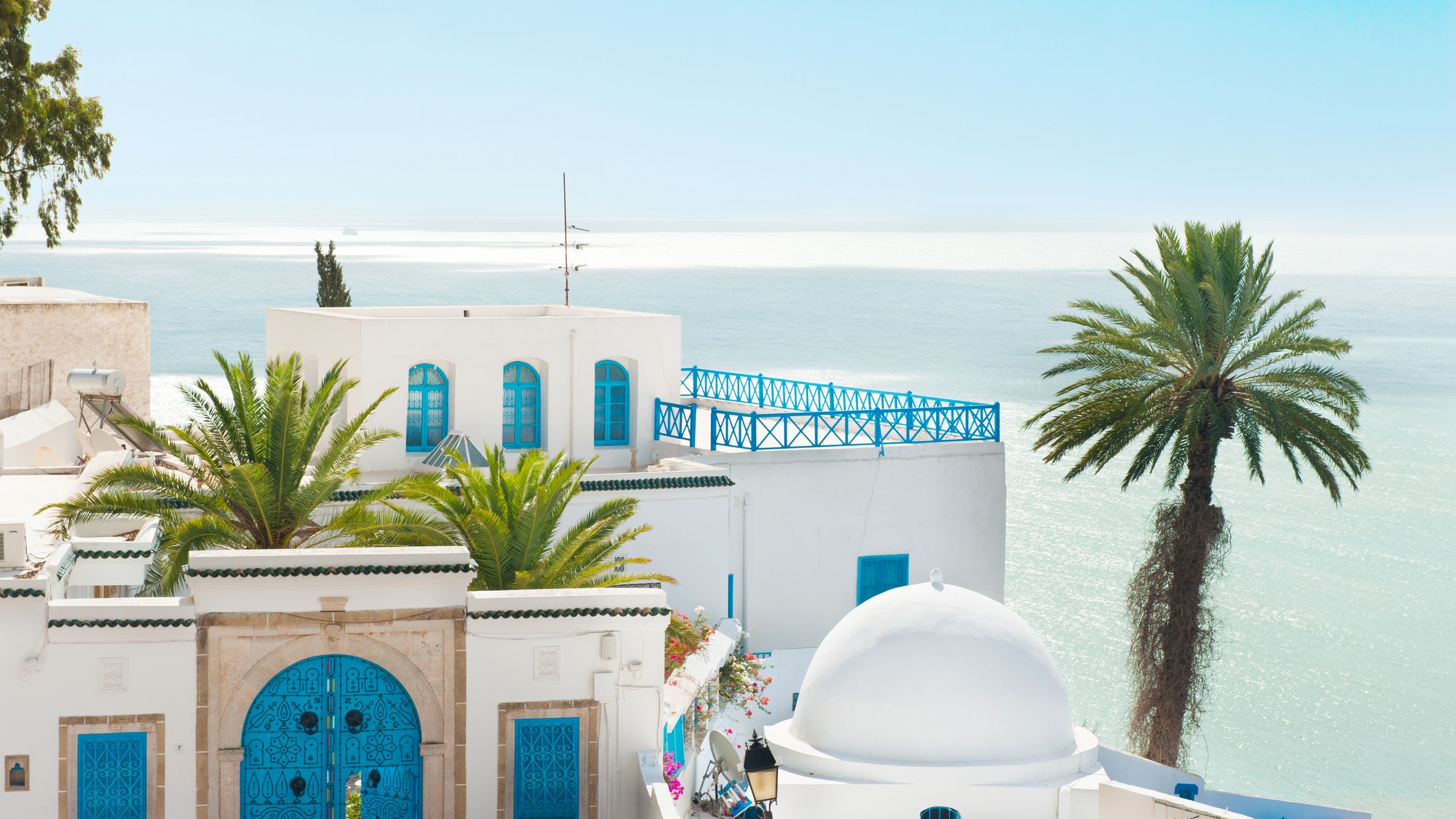Street Artist El Seed on Tunisia’s Creative Scene
1 September 2021
%2520Getty%2520Images_CNT%2520UK_Sophie%2520Knight.jpeg)
French-Tunisian street artist El Seed has gained global recognition for his captivating murals that seamlessly incorporate Arabic calligraphy. His artwork can be spotted across diverse locations, including Toronto, Cairo, Rio, and even the Korean DMZ. Furthermore, he plays a pivotal role in Tunisia’s post-revolution creative landscape, having traveled through the country to create murals for his inspiring “Lost Walls” project.
Describing Tunisia
If I had to describe Tunisia in one word, it would be serenity. At this very moment, I sit by the Mediterranean Sea, accompanied by a gentle breeze rustling the olive tree branches. This tranquil atmosphere evokes a sense of timelessness, a feeling I have cherished each time I return. While I could elaborate on the stunning variety of Tunisian landscapes, the depth of its cultural heritage, or the richness of its culinary offerings, what truly distinguishes Tunisia is its people. Throughout the country, from the bustling capital to quaint villages, the warmth and hospitality of Tunisians are unparalleled.
Connection with Tunisia
Although I was born in France, my parents ensured that we maintained a profound connection to Gabes, our hometown in southern Tunisia. Our family spent almost every summer in Gabes, creating timeless memories together – from beach outings to three-day wedding celebrations, and family visits to my father’s village of Temoula.
My Artistic Journey
My artistic journey began in Gabes, where I painted my first mural in 1998, marking the inception of my quest for identity. Growing up, I yearned to embrace my Arabic heritage and learn the language. While I conversed in Tunisian dialect at home, I lacked the ability to read or write. As I embarked on learning Arabic, I discovered my passion for calligraphy. Eventually, Arabic calligraphy became a bridge that reconciled my French and Tunisian identities.
The “Lost Walls” Project
The “Lost Walls” initiative was born in 2013, just two years after the Tunisian Revolution. I observed a growing disconnection from our nation’s rich history and cultural heritage, which motivated me to embark on a journey across Tunisia with my team. We met inspiring individuals from diverse communities, including the Berber community of Guelala, the Jewish community in Erriadh on the Island of Jerba, the Bedouins of Douz, and the fishermen of Kerkennah. Through this artistic endeavor, I aimed not only to showcase Tunisia’s beauty but to rediscover it myself.
Tunisia’s Creative Scene
The creative landscape in Tunisia is vibrant and diverse, featuring both private and public initiatives. La Maison de l’Image, founded by my friend Wassim Ghozlani, offers training in photography and filmmaking to young adults from underprivileged neighborhoods. Additionally, the Gabes Cinema Fen film festival, which commenced in 2015, showcases a remarkable selection of films and talented filmmakers for the local community.
In line with these initiatives, I established a creative space called The Lab in Tunis, an extension of my studio where my team collaborates on upcoming projects. I am also developing an art residency at my grandparents’ house in Temoula, nestled within a palm grove, intending it to be a hub for creatives to exchange ideas and grow together.
Dining Recommendations in Tunis
If a friend were to visit Tunis for just 24 hours, I would recommend starting the day at Punic’Art in Carthage for breakfast. For lunch, Dar Slah in the medina or El Mida in La Marsa would be excellent choices. In the evening, Le Golfe in La Marsa offers a fantastic dining experience.
Exploring Beyond Tourist Attractions
Beyond traditional tourist sites, I recommend connecting with local guides such as @wildtunis on Instagram. A seasoned native from the medina can provide private tours filled with intriguing narratives and a unique perspective of the city.
Local Shopping
If you have the means to travel, a trip to Sejnane, about two hours from Tunis, is worth your time. Here, you can meet talented craftswomen who continue a 3,000-year-old pottery tradition recognized by UNESCO as part of the Intangible Cultural Heritage of Humanity. Additionally, consider purchasing locally made products from brands such as Lyoum or Osay.
Accommodations
For a memorable stay, consider lodging at La Chambre Bleue, a guesthouse located in the old medina of Tunis. The owner is incredibly hospitable, providing an authentic atmosphere that represents life in the medina.
Music that Captures Tunis
To immerse yourself in the essence of Tunis, I recommend adding the song ‘Holm’ by Emel Mathlouthi to your playlist. For an enchanting experience, enjoy a cup of traditional Tunisian mint tea with pine nuts on the rooftop of Dar El Jeld, where you can admire a panoramic view of the city.
Follow El Seed on Instagram @elseed




